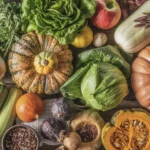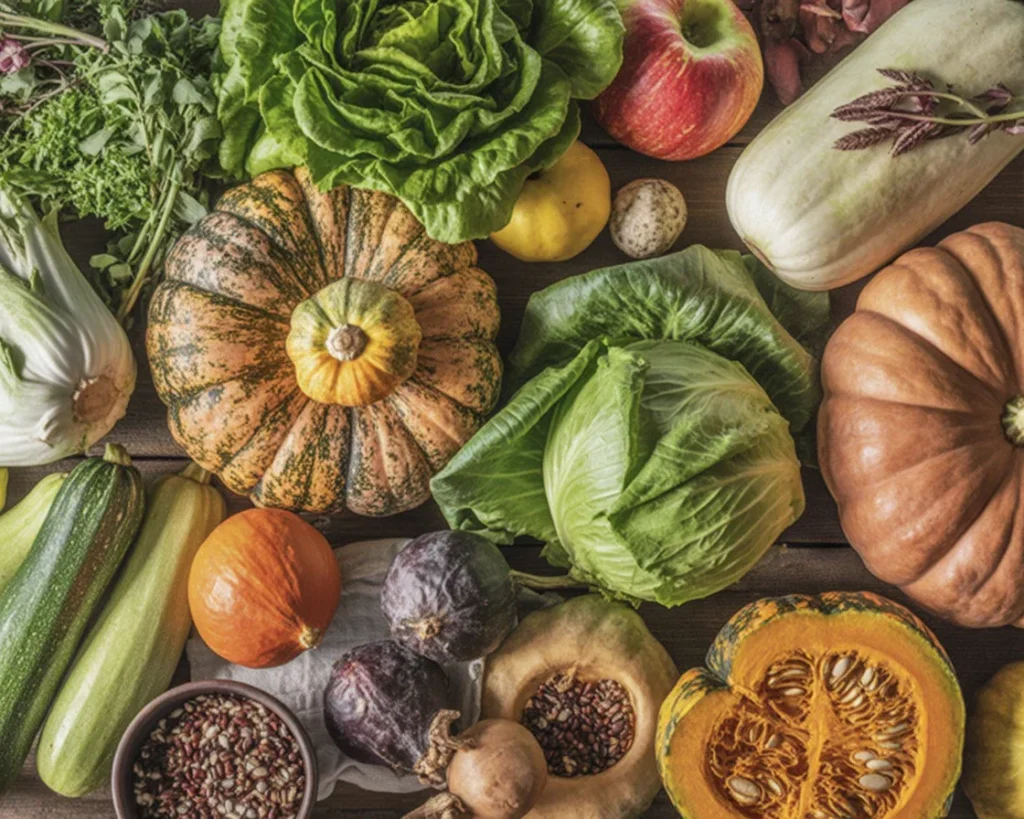Ever have that blah, sluggish feeling and wonder if it’s, I don’t know, something in your food? How to Get More Fiber in Your Diet is a question that pops up more than you might think. I didn’t care—then my bestie pointed out my snack choices were, let’s say, low on that magical ingredient: fiber. Getting enough is sorta trickier than you’d guess, especially if you love pasta night or, ahem, cookies like me. But swapping in a few fiber-rich favorites (honestly, easier than you’d think) really makes a difference. If you’re looking to jazz up dinner, swing by my favorite dinner recipes roundup—it’s shockingly simple to sneak in extra goodness with those. 
Understanding the importance of dietary fiber
Let’s be real, no one wakes up excited about “being regular.” But here’s the thing—fiber isn’t just about, you know, bathroom happiness (even though… well, it totally helps there). It keeps things moving through your gut, sure, but it can also help lower cholesterol and keep blood sugar in check.
This floored me: eating more fiber makes you feel full longer. Like, that bag of chips? Useless compared to a bowl of roasted chickpeas. Sometimes, I forget how much better I feel when I’m not thinking about my next snack five minutes later (story of my life).
The other bonus—high-fiber foods tend to be packed with vitamins and stuff, so it’s kinda like a two-for-one deal. Smart swap, right?
“For years, I struggled with feeling hungry all afternoon. Adding more fiber-rich veggies at lunch kept me satisfied and focused way longer. Lifesaver!” —Rebecca M.

Top food sources rich in fiber
Okay, time for the cheat sheet. Beans are my MVP—kidney, black, chickpeas. Dump them in salads, blend for dips, go wild. Oats deserve love too. Overnight oats? Game changer for rushed mornings.
Veggies like broccoli and carrots are classic, but don’t knock sweet potatoes (bake a bunch on Sunday, trust me on this). Don’t forget about fruit—raspberries, apples (with the skin, duh), even pears. Whole grain bread beats squishy white bread by a mile, taste-wise if you ask me. My grandma always said, “If it crunches, it’s probably good for you.”
I started buying bags of frozen mixed veggies to keep on hand, just to toss into, well, basically anything—real lifesaver when you’re staring at the fridge at 6pm with zero inspiration.
Practical tips for incorporating fiber into meals
Confession: I used to skip breakfast (don’t judge), but now I throw some chia or flaxseeds in my yogurt. Makes a big difference. My favorite tip: swap out half the white flour in recipes with whole wheat (works like a charm in pancakes and even treats—check out my trick with madeline cookies recipe using cream cake).
Toss salad greens on pretty much anything. Seriously, pizza, sandwiches, eggs—just pile ‘em on and feel fancy.
Another thing—add beans to pasta, soups, or stir-fries. It bulks up the meal and, shockingly, tastes awesome.
If fruit feels boring, try topping it with cinnamon or yogurt. Little things like that. One friend of mine puts lentils in everything. Not kidding. Once you get the hang of it, you sort of look for places to sneak in a little extra.
Here’s my quick-start plan:
- Swap out white bread for whole grain or sprouted grain.
- Add beans or lentils to your weekly soups—super affordable too.
- Sprinkle seeds (chia, flax) on cereal, yogurt, or even salads.
- Munch on cut-up veggies instead of chips when cravings hit.
Benefits of a high-fiber diet
So, why bother? Besides, you know, not feeling bloated all the time. Fiber helps with heart stuff (less cholesterol hanging around), keeps your blood sugar from spiking like a roller coaster, and can even help with weight management by filling you up.
There’s also all sorts of science about helping the “microbiome” (fancy gut talk), but I’ll be real: the days I eat more veggies and beans, I just. Feel. Better. My skin looks happier. My energy is less… ugh.
Surprisingly, upping fiber doesn’t mean all salads and misery—once I started making swaps for fiber-rich stuff, cravings for junk went way down. I think fiber is kind of magic, and now I’m the nerdy friend who tells everyone that.
How to read labels to identify high-fiber foods
Labels are a jungle. Sometimes I zone out and just grab the box with the prettiest design, but—fiber info is usually right under “total carbohydrates.”
Look for anything with at least 3 grams of fiber per serving. If it’s got 5? Honestly, gold star. Sneaky trick: sometimes “whole wheat” doesn’t mean lots of fiber, so it’s worth a peek at the details.
Ingredients matter. If “whole grain” or some kind of bean is first, you’re good. “Enriched wheat flour”—ehhh, not so much. I made this mistake with crackers once, and now I double-check if it’s really whole grain before buying.
Common Questions
Is fiber only found in fruits and veggies?
Nope! Beans, whole grains, and even some nuts and seeds are loaded with fiber too.
How much fiber do I actually need?
Most folks need between 25–35 grams a day. That’s a lot more than a typical bagel… so you gotta mix things up.
What if fiber makes me feel gassy or bloated?
Totally normal if you up your fiber suddenly. Try adding it gradually, and drink more water. Trust me, your gut will adjust.
Can fiber really help with weight loss?
Big yes! It helps you feel fuller longer, so you snack less (or at least, smarter—see those roasted chickpeas!).
Do processed foods have good fiber?
Usually not. Stick to whole, real foods when you can, but if you find higher-fiber bread or crackers, check that label again.
Give Your Meals a Fiber-Friendly Makeover
So, next time you’re mulling over what to eat, maybe try tossing some extra beans into chili or swapping out white pasta for whole grain. Simple tweaks—big payoff! Want more on the sciencey side? Peek at How to get more fiber in your diet from Harvard Health or the good folks over at Mayo Clinic’s Dietary fiber: Essential for a healthy diet for even more ideas. Honestly, I bet you’ll feel the difference (I sure did—like, real talk). Alright, get out there and show your meals some fiber love already. Your stomach and your energy? They’ll thank you.
Print
Give Your Meals a Fiber-Friendly Makeover
- Total Time: 40 minutes
- Yield: 4 servings
- Diet: Vegetarian
Description
Learn how to easily incorporate more fiber into your meals for better digestion and overall health.
Ingredients
- Beans (kidney, black, chickpeas)
- Oats
- Broccoli
- Carrots
- Sweet potatoes
- Raspberries
- Apples (with skin)
- Pears
- Whole grain bread
- Chia seeds
- Flaxseeds
- Cut-up veggies
Instructions
- Start your day by adding chia or flaxseeds to your yogurt.
- Swap out half the white flour in recipes for whole wheat flour.
- Add beans or lentils to soups and salads for added fiber.
- Top fruit with cinnamon or yogurt for an interesting twist.
- Replace white bread with whole grain or sprouted grain.
- Keep frozen mixed veggies on hand for easy meal additions.
Notes
Aim for at least 25-35 grams of fiber daily and gradually increase your intake to avoid digestive discomfort.
- Prep Time: 10 minutes
- Cook Time: 30 minutes
- Category: Main Course
- Method: Mixing and Cooking
- Cuisine: Healthy
Nutrition
- Serving Size: 1 serving
- Calories: 350
- Sugar: 10g
- Sodium: 150mg
- Fat: 10g
- Saturated Fat: 1g
- Unsaturated Fat: 5g
- Trans Fat: 0g
- Carbohydrates: 55g
- Fiber: 15g
- Protein: 12g
- Cholesterol: 0mg
Keywords: fiber, healthy eating, vegetarian recipes, meal prep, nutrition
